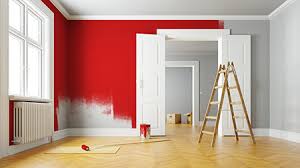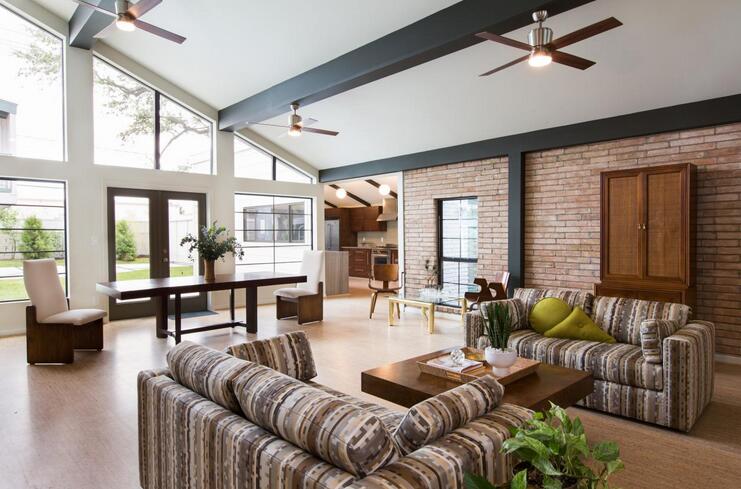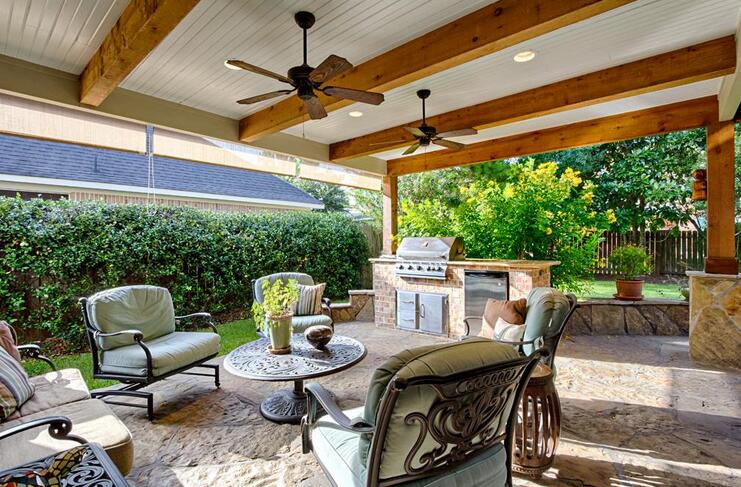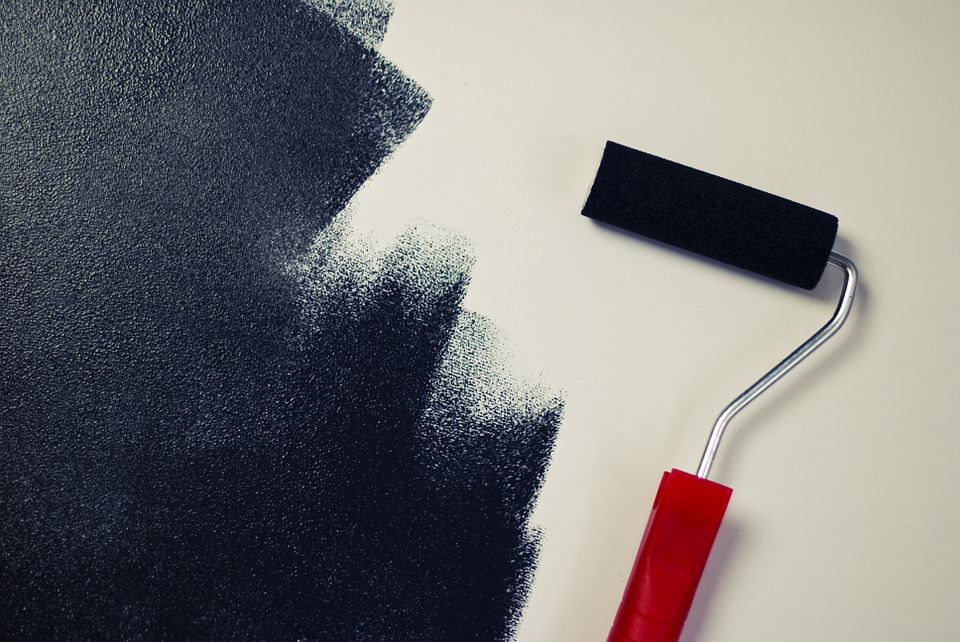How to Increase Property Value by Using Paint
For most homeowners, making improvements is an important part of owning their own place. Not only will this make the house more comfortable to live in, but for most, it will also increase the overall value. While many changes can be made, some can be quite expensive and require weeks to months of labor by professionals. If you’re looking for an easy update, then try painting your home. This is an easy and affordable way to increase the overall value while improving the beauty of your residence.
To increase property value using paint, the tips below can help. You might be surprised that it’s one of the easiest ways to truly improve your home and make it better than ever. Even if you don’t plan on selling right away, fresh paint can make all the difference with your love for your home.
Start with the Outside
Curb appeal is one of the most important factors in selling a home and making it look desirable to potential buyers. If your paint is chipped, faded, or a bright color, then you’ll want to have it painted right away. In most areas, neutral colors with coordinating trim are by far the most attractive. This can include gray, beige, brown, white, navy blue, and white.
While it can be tempting to try to save money and paint on your own, this is not recommended. Instead, it’s best to hire professional Painters to ensure the painting is done the right way. With our expertise, you’ll have peace of mind knowing the paint will look beautiful once it’s done. Better yet, having professionals is a much safer choice because they come equipped with experience and safety equipment.
Try New Colors
The interior paint colors in your home don’t have to be boring stark white. In fact, many buyers don’t want plain white walls when they look at homes to purchase. While neutral colors are the most aesthetically pleasing, you can have Painters add in accent walls with bold colors for a more customized look. Some of the best colors to use are soft blues, gray, beige, or off-white. Beautiful complimentary paint colors will immediately make the look of your home more modern, welcoming and can even increase resale value if you’re looking to sell.

Paint the Trim
If the paint on your home’s trim doesn’t look nice, it can take away from the overall look of your newly painted walls. To avoid this, have the trim carefully painted by a professional with attention to detail. This should be done on the exterior trim around the windows and interior baseboards on the walls throughout the home. Although this can be painstaking work, it’s well worth it for the improved look it can offer.
Update the Bathroom
Over time, the paint inside of your bathroom can become discolored with water, soap, and toothpaste stains. Fortunately, you can cover these up by applying a fresh coat of paint within the space. Bathrooms should generally be painted white, creamy white, light blue, or any other light color that will make space look bigger and brighter. However, charcoal or brown can be used if there are a lot of white accents, such as white-trimmed mirrors and a white vanity.

Paint the Shutters
Installing new shutters in your home can cost thousands of dollars, which is easily out of budget for many homeowners. Fortunately, you can transform the look of older shutters by having them painted by a professional. This will make them look fresh and brand new so your entire space looks lighter and brighter. In most homes, white is the best color to go with when it comes to these window coverings. It will match any paint color on the walls and look great from the outside as well.
Update the Front Door
Your front door can be a welcoming accent piece that adds a unique and fun touch to the look of your home. Try going with a color that pairs well with the exterior paint colors used in your home. This can include blue, red, or even black. Although this may seem bold, it can improve your home’s appearance and give it a more customized look.

Professional house painting can increase your property value
Your home is your most prized possession and it is likely to be your biggest investment. Increasing the value of your home is an obvious choice for many people. Instead of making costly renovations (such as remodelling, building a new garage or building a pool in your backyard), why not opt for a less expensive, yet equally appealing upgrade – such as professional house painting? Whether you are planning to sell your home in the near future or stay in it for another few years, a professional paint job will increase the value of your home.
What is the condition of your paint?
The look and feel of a residence is widely influenced by the paint job. Is the paint fresh, vibrant and new? Or is the paint old and cracking? Your home’s paint will deteriorate over time due to weather, smudges and everyday use. Not only will a fresh coat of paint affect the perceptions of outside visitors (such as valuators and potential buyers), but it will also influence how you and your family feel when entering your home. Some of the benefits of hiring a professional painter include the following:
You can live in your home while it is being painted. If you are working a full-time job, you will probably have to stretch the paint job over a few weekends in order to get the job done. Hiring a professional painter relieves you of these duties, as they can take care of the painting while you are at work and get the job done in the minimum amount of time.
Eliminate errors. Not every person has all the correct tools and equipment needed to pull off a professional paint job. Reduce the amount of inconsistencies and errors by hiring a team of professionals that do professional house painting on a daily basis.
Proven Ways to Increase Home Value
Making your house more efficient, adding square footage, upgrading the kitchen or bath and installing smart-home technology can help increase its value.
Make it more attractive
Curb appeal — how your home looks from the street — is your first chance to make a good impression, A home’s exterior needs to make a prospective buyer want to walk through the front door.
Make sure existing landscaping is well-maintained. If your yard seems dull in comparison with your neighbors, consider planting flowers or repainting the front door.
Once the exterior looks good, focus on the kitchen and bathroom. When these two rooms are outdated, they can keep a property from reaching its highest valuation, And you don’t have to spring for heated towel racks or marble floors, either. A minor kitchen remodel recoups 81% of its cost in added value on average, versus 53% for an upscale kitchen remodel with stone countertops, custom cabinets and commercial-grade appliances, according to Remodeling magazine’s “2018 Cost vs. Value Report.”
The same is true for bathrooms; a midrange remodel — new flooring and a few updated fixtures — delivers a 70% return on investment, while an upscale bathroom remodel — heated flooring, custom cabinets and designer fixtures — sees 56% on average.
Make it low-maintenance
Since many home buyers worry about buying a home that will need constant maintenance, replacing a major component before putting it up for sale — like the furnace, water heater or even the roof — may calm fears of an emergency repair in the near future and help get you a higher price.
Improvements that make things easy to clean and maintain may also increase home value. Consider replacing easily stained carpet with hardwood floors or replace high-maintenance wood siding with vinyl siding.
Make it low-maintenance
Since many home buyers worry about buying a home that will need constant maintenance, replacing a major component before putting it up for sale — like the furnace, water heater or even the roof — may calm fears of an emergency repair in the near future and help get you a higher price.
Improvements that make things easy to clean and maintain may also increase home value. Consider replacing easily stained carpet with hardwood floors or replace high-maintenance wood siding with vinyl siding.
Make it bigger
“Square footage has a huge impact on value,” Price per square foot is one way she helps clients compare homes that are similar in style and upgrades.
Bigger homes often command higher values, and even if an appraiser doesn’t officially acknowledge the full value of added space, a buyer will likely notice.
Adding a room is the obvious way to make your house bigger, but you can also create additional living space by finishing the basement or building a deck.






